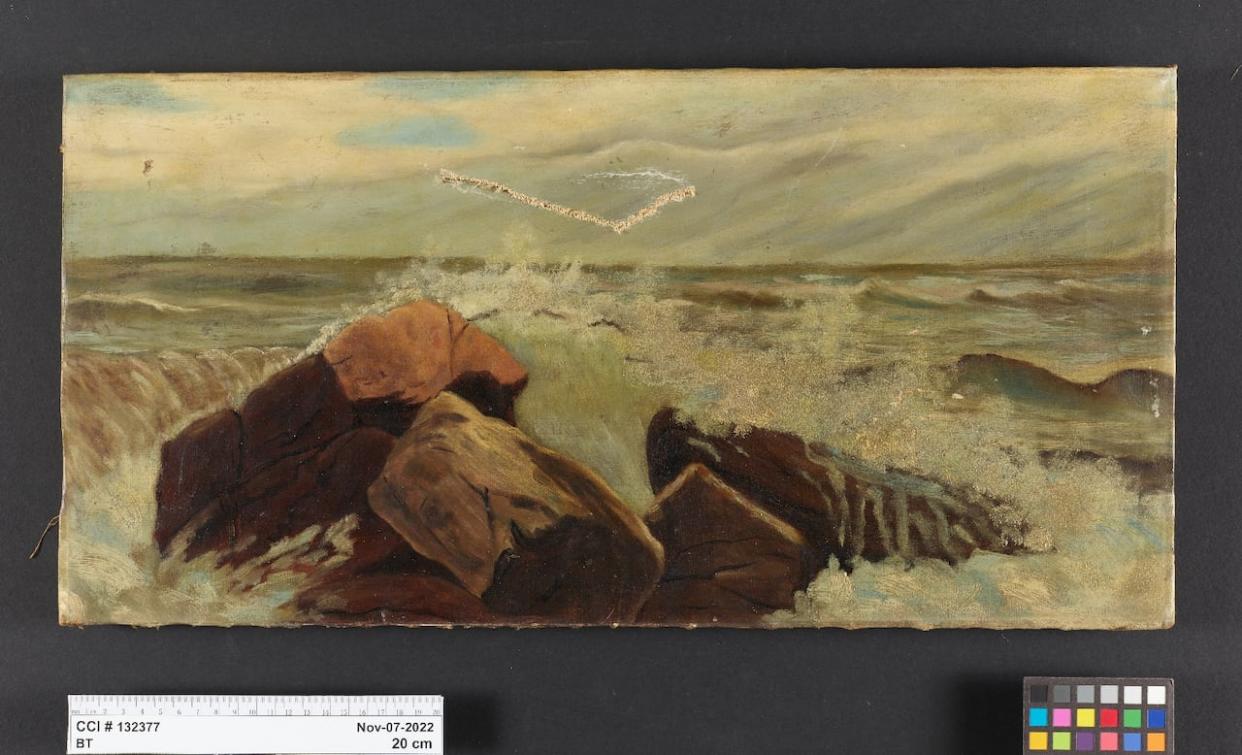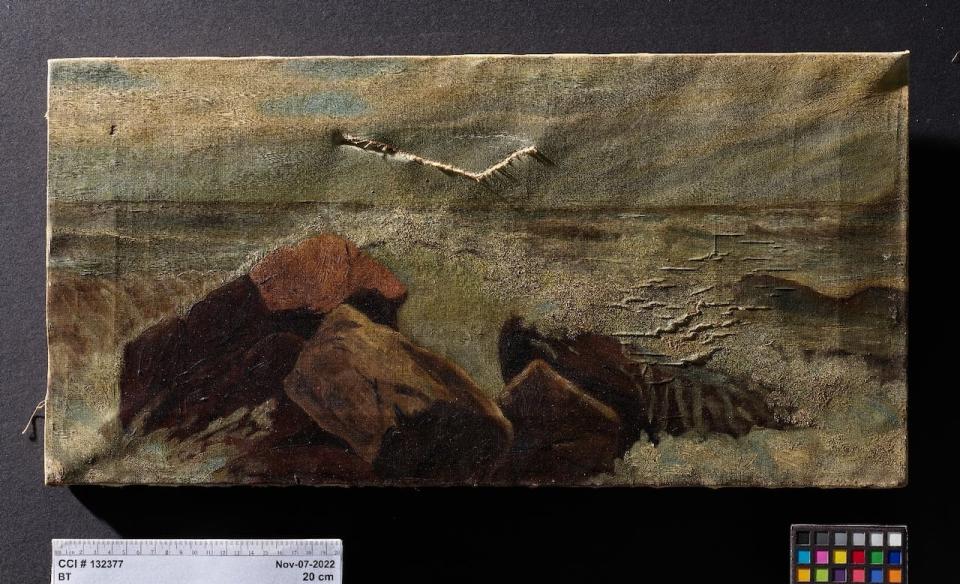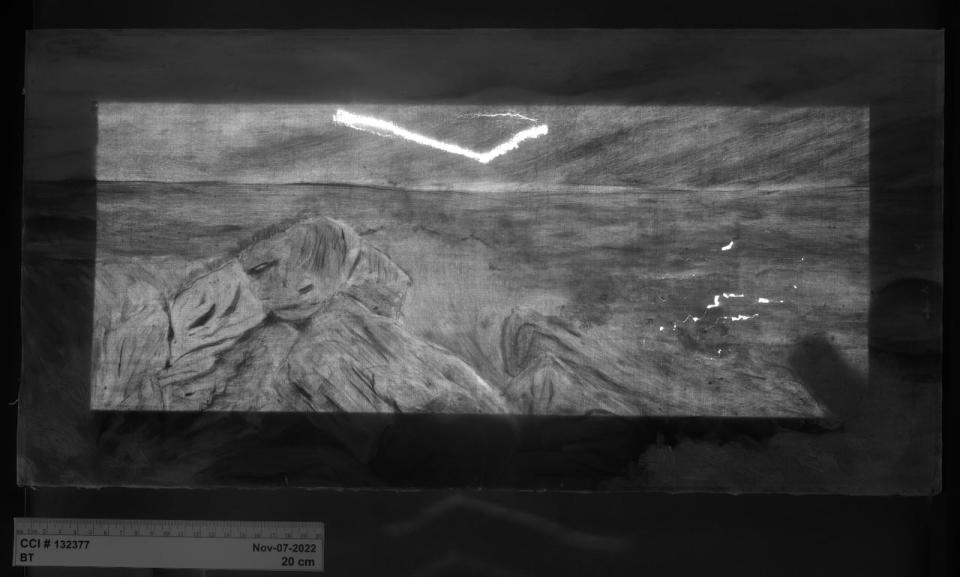P.E.I. oil painting from 1890s being restored to its former lustre

- Oops!Something went wrong.Please try again later.
The Canadian Conservation Institute is restoring a P.E.I. painting from the 1890s, by a "bosom friend" of Lucy Maud Montgomery, that was donated to the Bideford Parsonage Museum.
The artist, Edith England, met the Anne of Green Gables author in the late 1800s when Montgomery began teaching at the Bideford school in western Prince Edward Island.
The two remained close friends for many years, as documented in Montgomery's journals.
A few years ago, England's family offered her moody seascape Waves Over Rocks to the Bideford Parsonage Museum, located in the house where Montgomery was a boarder while she taught in the community.

A photo of the painting taken under raking light, aimed at an oblique angle to show an artwork's surface texture, reveals distortions in the canvas around the edges of the image. (Canadian Conservation Institute/Facebook)
The oil painting arrived badly damaged, though, with a tear in the canvas, some water damage and faded paint.
Staff at the museum reached out to the Canadian Conservation Institute for help in restoring the artwork.
"I was really looking forward to the conservation treatment of this painting because I knew that we would be able to really bring it back to life and make it look like none of the condition issues had really happened to this painting," said Fiona Rutka, the institute's lead conservator on the project.

A photo of the painting taken with near-infrared radiation reveals the drawing that Edith England applied to her canvas before she started to paint. (Canadian Conservation Institute/Facebook )
Rutka said she's halfway through the restoration. So far, she has removed the yellowed varnish and a dark grime layer, and repaired the tear.
The next step will be supporting the painting with a new canvas backing, and adding conservation paint to conceal fading.
'I know our community will appreciate it so much'
Janice Trowsdale, the Bideford museum's historical director, said much of the damage to the painting likely occurred in the 1930s, when the England family home caught fire.
She said grime can also build up as the fireplaces in historic homes emit soot.
Trowsdale has been following updates about the work Rutska has been doing on Waves Over Rocks and is happy to see the painting's original lustre being restored.
"I'm so proud of what Fiona's doing for us. It's really wonderful, and I appreciate it so much and I know our community will appreciate it so much," she said.
Once the conservation work is complete, the painting will be returned to Bideford, where Trowsdale hopes to display it in a more prominent location, perhaps in Montgomery's former bedroom.
For Rutka, seeing a painting come back to life is the "really fun part of being a conservator" — especially since Waves Over Rocks is something of a rarity.
"One thing that makes it very special to me is that it was painted by a woman artist from the 19th century, and that is really unusual," she said. "So we're so lucky to have that as an object in the lab."

